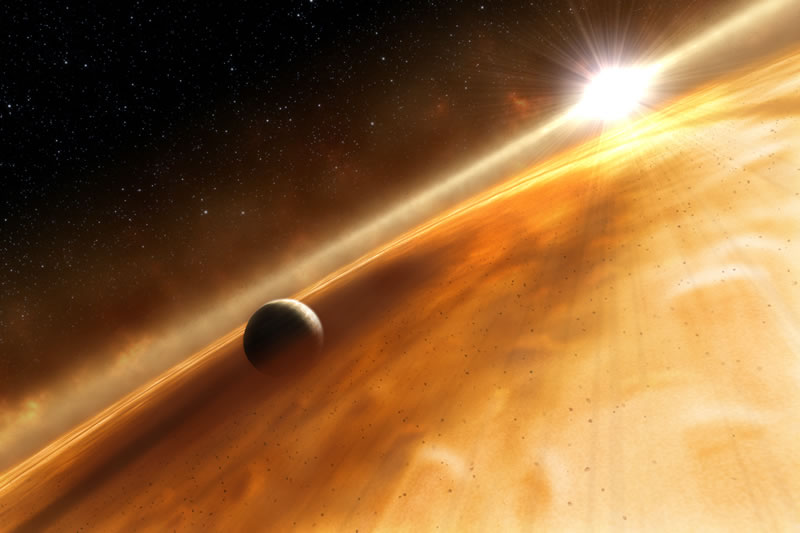Planetary Formations
What we'll learn in this section
Topic 12 – Formation of planetary systems 12.1 - Be able to identify the operation of each of the following in our Solar System:
- a. gravitational attraction producing regular motion, including the orbits of planets and moons
- b. tidal gravitational forces producing effects, including ring systems, asteroid belts and internal heating
- c. gravitational interactions of multiple bodies producing effects such as gradual shifts in orbits, chaotic motion, resonances and the significance of Lagrangian Points (detailed mathematical descriptions not required)
- d. accidental collisions causing impact craters, changes to orbital motions or planetary orientations
- e. solar wind affecting comets, planetary atmospheres and the heliosphere
12.2 Be able to identify the operation of each of the following interactions in the formation of planets and moons:
- a. the interaction between tidal gravitational and elastic forces to determine whether a body is broken apart (Roche Limit)
- b. the interaction between attractive gravitational and elastic forces in determining a body’s spherical or irregular shape
- c. the interaction between gravitational and thermal factors in determining the presence of an atmosphere
12.3 - Understand the main theories for the formation of gas giant planets in planetary systems
12.4 - Understand the current methods for discovering systems of exoplanets, including transit method, astrometry and radial velocity measurements
12.5 - Understand the requirements for life and the possibility of lifeforms existing elsewhere, including:
- a. on Titan
- b. on Europa
- c. on Enceladus
- d. outside our Solar System
12.6 - Understand the relevance of the Goldilocks (Habitable) Zones
12.7 - Understand how factors in the Drake equation can be used to allow us to estimate the number of civilisations in our Galaxy
12.8 - Understand the search for extra-terrestrial intelligence, by receiving radio waves (SETI), including the benefits and dangers of discovering extra-terrestrial life Topic 11 – Exploring the Solar System
11.7 - Understand the main theories for the formation and current position of the gas giant planets in our Solar System
11.13 - Understand the main theories for the origin of water on Earth
In this section you will learn the factors that go into planet formation. We also look at discovering planets outside the solar system, factors needed for allowing life to start and grow and the possibility of finding intelligent civilisations other than on Earth.
At the end of this section take the mini quiz to test yourself.

 | © All Rights Reserved |
| © All Rights Reserved |